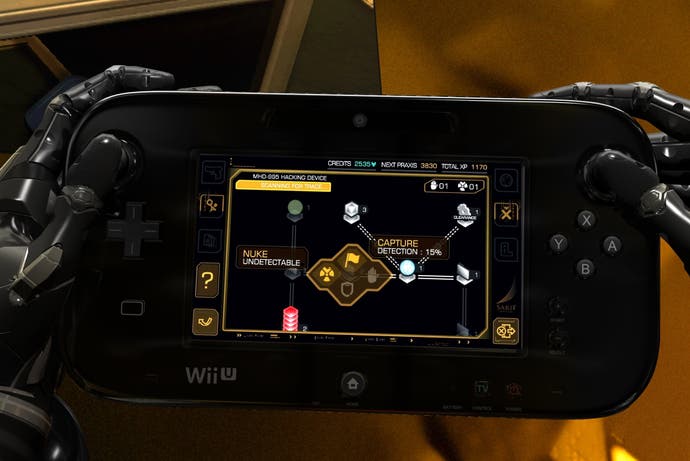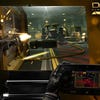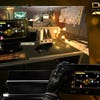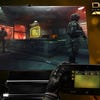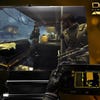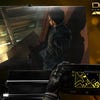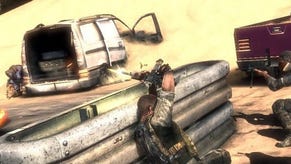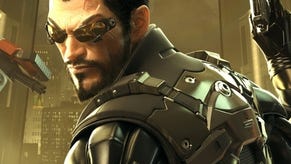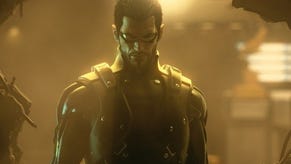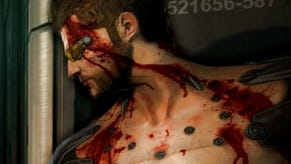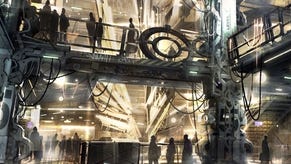Deus Ex: Human Revolution Director's Cut for Wii U confirmed, and yes, they've fixed the boss battles
UPDATE: Trailer released.
UPDATE: Square Enix has released a trailer for the Wii U version of Deus Ex: Human Revolution, giving us our first look at the Director's Cut of the game. The video is below.
ORIGINAL STORY: The Deus Ex: Human Revolution Director's Cut is real and, yes, the people behind it have fixed the boss battles.
The game is due out exclusively on Wii U (for now - more on that later) soon, although US shop Amazon has it down for 7th May, and it includes a raft of improvements, changes and additional features developer Eidos Montreal hopes will convince those who played Deus Ex when it came out in 2011 for the PC, PlayStation 3 and Xbox 360 to fork out their hard-earned cash once again.
Director's Cut is, according to Eidos Montreal, more than a port. The developer describes it as the "ultimate edition of the game". It is a co-production between the huge Canadian studio and Australian developer Straight Right, which has form when it comes to working with the Wii U: Straight Right made the Wii U version of Mass Effect 3.
So, what changes have been made? Top of everyone's list, Deus Ex executive game director Jean-Francois Dugas and game designer Emile Pedneault tell Eurogamer, were the boss battles.
Deus Ex's boss battles are considered by many to be the weakest part of the game. They were frustrating, combat heavy fights that broke Deus Ex's sneaky heart, forcing players to fire guns pathetically after they'd popped all their upgrade points into stealth and hacking. In short, the boss battles were a bit crap, and it came as no surprise when it was revealed that their development had, in fact, been outsourced.
"We went through all the boss battles and said, 'let's just start from the beginning,'" Pedneault says. "So that's exactly what we did."
Each of the game's three boss fights have had their map layouts reworked to provide players with alternative potential strategies. New hacking challenges are available to players who focus on hacking, and stealth options are available to those who focus on stealth.
POTENTIAL SPOILERS AHEAD: You can now kill Lawrence Barrett, Yelena Fedorova and Jaron Nammir without firing a single bullet. "We took the whole experience Deus Ex gave you and we applied it correctly to the boss fights," Pedneault continues.
We went through all the boss battles and said, 'let's just start from the beginning,' So that's exactly what we did
game designer Emile Pedneault
Many found Barrett, for example, a particularly tough difficulty spike on account of his high damage, relentless pursuit of the player within a tight hanger. This map has been reworked to provide a second additional layer so Jensen can hide, forcing his foe to lose sight of him.
Understandably Eidos Montreal wasn't able to provide players with the option to not kill the bosses, although it sounds like it would have liked to, because the game's story couldn't be altered.
"They have to die," Dugas says, "but the fact is you're not forced to go full-frontal with them. You can just use some of the devices or tricks in the rooms to eventually kill them without having to spend your own bullets."
If Deus Ex's boss battles topped the list of complaints, its energy system came a close second. The vanilla version limits Jensen's recharge to one cell only - irrespective of how many cells are unlocked. This limited the use of augmentations - perhaps the game's coolest feature. "One of the criticisms we received back with the original release was, it's cool you have all those augmentations, but it's like at the same time we balanced it in such a way that we don't want you to use them!" Dugas says with a chuckle.
On Wii U the energy system has been made more forgiving by allowing for two energy cells to recharge by default on all but the hardest difficulty. This should mean players use Jensen's augmentation powers more freely.
"It's not balancing it to make it super easy," Dugas insists. "It's still Deus Ex. You still have to make your choices. But we wanted to give you more opportunities to have fun with all the augmentations you acquire."
Elsewhere, the AI governing Deus Ex's enemies has been improved to include the tweaks made for The Missing Link downloadable expansion. Dugas says Human Revolution's programmers continued to work on the game's AI as it was in submission with Microsoft and Sony, and were able to make improvements that made it into The Missing Link DLC. Enemy cone of vision, which governs when guards detect Jensen, was made more consistent. These improvements have been retrofitted into the entire game for the Wii U version.
It's much sharper. There are more nuances between the light and dark places
Deus Ex executive game director Jean-Francois Dugas
Eidos Montreal was keen to improve the graphics for the Wii U version, too. The visuals seen in The Missing Link DLC had more of an impact, Dugas says, than those in the main game, because the developers were more comfortable with their tools when they came to create them. And so, The Missing Link benefited from work done to the game's shaders, which had the knock on effect of making environmental reflections on textures were better. And the lighting system was revamped to be based on an interpretation of a formula used by real world architects during the building planning stage to simulate how light will bounce around an environment. All the visual effects seen in The Missing Link were applied to the main game for the Director's Cut.
"It's much sharper," Dugas says. "There are more nuances between the light and dark places."
You might also notice a new fog system that, according to Pedneault, "makes the atmosphere really stand out". Shadows that were choppy have been smoothed, Dugas says. "It makes a big difference."
Pedneault insists these improvements wouldn't be possible on Xbox 360 simply because there's not enough disc space available. Neither, Dugas says, would the anti-aliasing, which wasn't present in the other console versions but is in the Wii U version.
"It's more powerful on the Wii U," Dugas says. "Even some of the graphics that were improved already on the 360 for The Missing Link, we were able to go a little bit farther with the Wii U, just because of the hardware. In terms of the shadows, which are smoothed out, it's much different than the Xbox version."
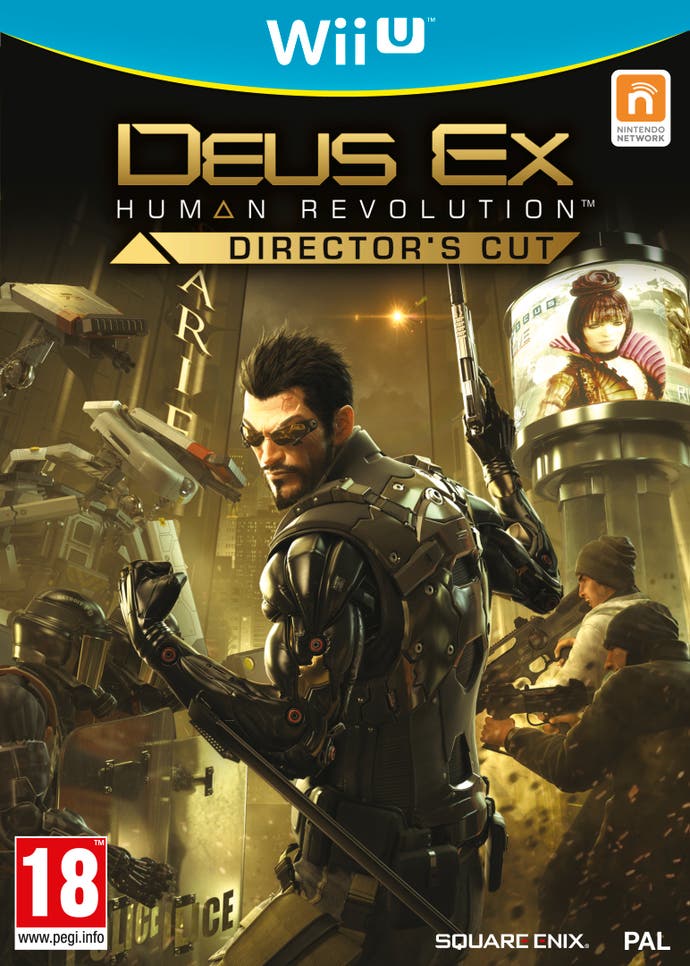
From a more functional perspective, Eidos Montreal used the Wii U GamePad to create a brand new augmentation, what it calls the Neural Hub. Apparently one criticism the developers heard was players wanted to know how much health enemies had and what loot they carried before taking them on. The game's Smart Vision augmentation, which allows players to see enemies through walls, was extended and fused with the GamePad, resulting in the Neural Hub.
So now, on Wii U, you can use the GamePad to see enemy health, armour type (heavy, medium or light) and loot. The idea is this will let players plan their moves better; by checking loot you'll be able to identify a target who is carrying a pocket secretary, which may contain the code for a locked door you're after, or decide not to go into a room because it's packed with heavies with loads of hit points.
"One of the first CGI trailers we did in 2010 showed Jensen's vision turning into Smart Vision, and you saw an enemy with all this information," Dugas says. "Now it gets closer to that feel, that wasn't present in Human Revolution.
"We used the GamePad to improve the immersion of the game. We found that this touch-screen, the GamePad and everything, is closer to the vision of Deus Ex, where you are someone who is augmented and you have systems implemented in you that give you the edge in combat in all situations."
You can also use the GamePad to navigate the menus, to display the map, the augmentation system, the inventory and all the rest. "All the systems are now linked to the Neural Hub," Dugas continues. "All your maps, your inventory, your augmentation menu, your mission log, are now systems in Adam Jensen.
"You have the impression when playing that the Wii U GamePad is part of Adam Jensen and one of his useful augmentations. It doesn't break the pace."
There are swipe controls, too. One new feature, called grenade throwback, allows Jensen to equip a proximity detector that alerts him to a nearby grenade. So, if an enemy chucks a grenade at you, the GamePad will vibrate, and you can swipe the touch-screen to pick it up and lob it back.
By default the touch-screen is Jensen's radar, a sort of hybrid between the main radar and the 2D map. You can open the 2D map on the GamePad and use the stylus to scribble notes, which are then reflected on your main screen radar. Eidos Montreal hopes players will use the feature to draw out approaches in particularly tricky areas.
You can also use the touch-screen for the hacking mini-game, using your fingers to progress, and to punch in codes. Meanwhile, for weapons that have a scope, such as the sniper rifle, you can use your telly to centre on your target, then enter a precision mode using the touch-screen, which displays the cross-hair.
You have the impression when playing that the Wii U GamePad is part of Adam Jensen and one of his useful augmentations. It doesn't break the pace
Deus Ex executive game director Jean-Francois Dugas
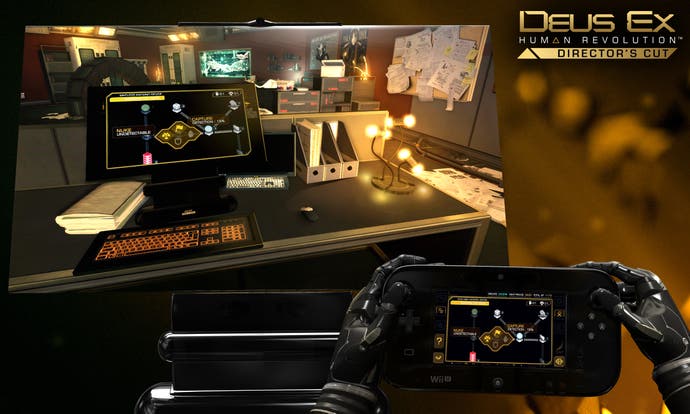
Some may wonder why Eidos Montreal is even bothering creating a Wii U version of Deus Ex in the first place. After all previous ports of games that released on PC, PlayStation 3 and Xbox 360, such as Mass Effect 3 and Batman: Arkham City, hardly set the world on fire. According to Dugas, though, the development team saw the Wii U as an opportunity to create this "ultimate edition" of the game.
"It's a new console," he says. "It has a lot of new interesting features in terms of the controller.
"But also in terms of Deus Ex: Human Revolution, we had been talking for a long time about creating this ultimate edition where there would be new content and we would have a chance to revisit some of the aspects of the game. We thought with the release of the Wii U it was a great opportunity to do that, to take advantage of this new console but also create the ultimate package for the game."
Included in this "ultimate package" is all of the DLC, but it has been retrofitted to slot seamlessly into the main game. The Missing Link DLC is now included in the main story rather than separated out, and the pre-order bonus mission to rescue Tong's son is popped in, too.
There's Half-Life 2-style director's commentary, what amounts to some eight hours of chat from Eidos Montreal developers. Icons dotted around the world can activate this voice over, and you're free to continue playing as you listen.
"We really did quite a lot to make this package very unique," Dugas says, "and give the old fans who already enjoyed Human Revolution a new purpose to enjoy it again."
Will those who played Human Revolution when it released nearly two years ago buy the game again for Wii U? It seems a hard sell, despite what on the face of it is an impressive revamp of what is a brilliant game. But a more important question for many may be whether the Director's Cut will ever make its way to PC, PlayStation 3 or Xbox 360. Of course, the GamePad-specific features will remain exclusive to Nintendo's console, but there seems no reason why much of the additional content, such as the director's commentary, integrated DLC and improved boss battles, couldn't be sold to PC, PlayStation 3 and Xbox 360 gamers. Dugas says he can't comment on that at the moment. We shall see.
